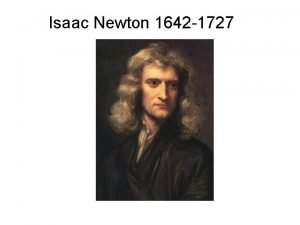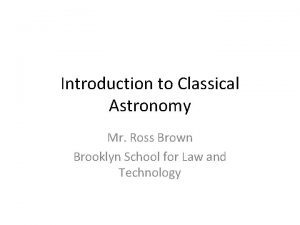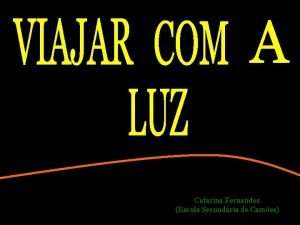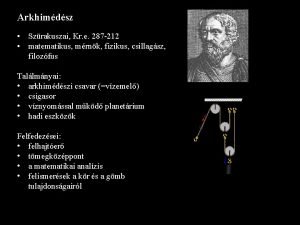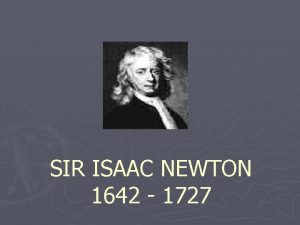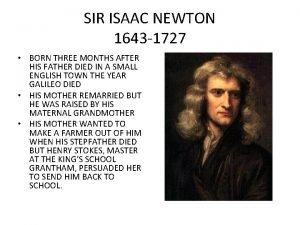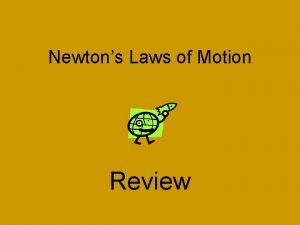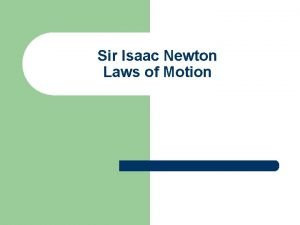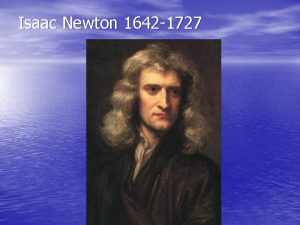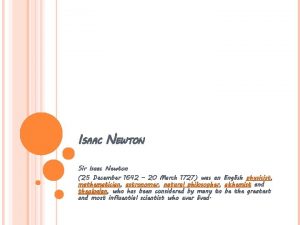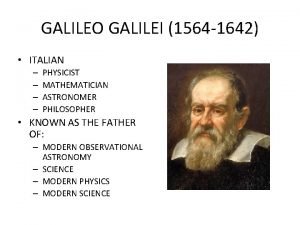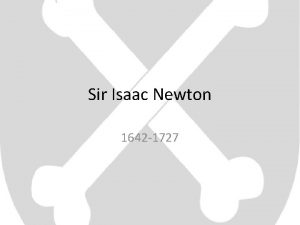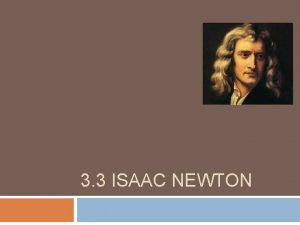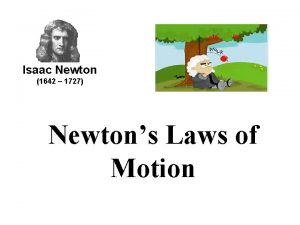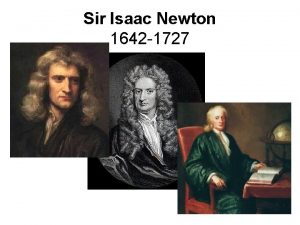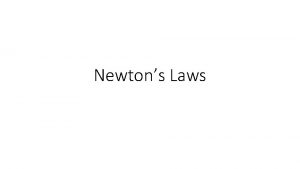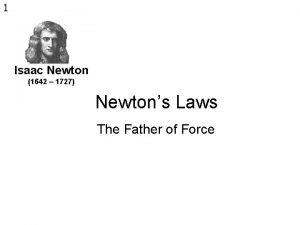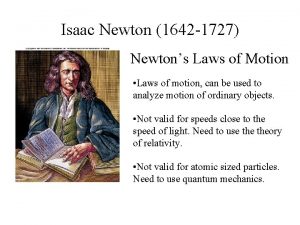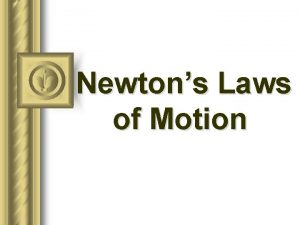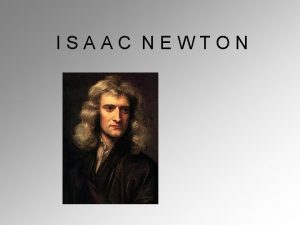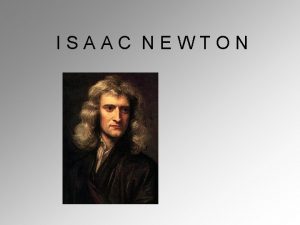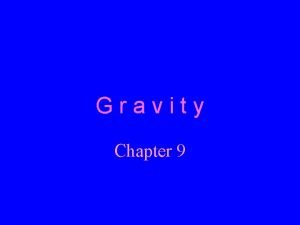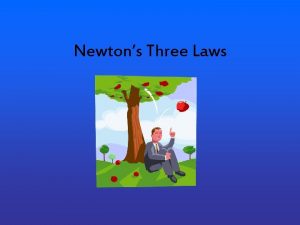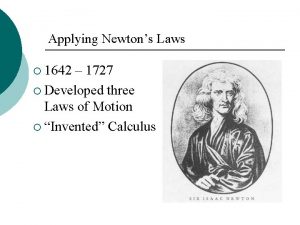Isaac Newton 1642 1727 Newtons Laws Laws of



















- Slides: 19

Isaac Newton (1642 -1727)

Newton’s Laws • Laws of motion, can be used to analyze motion of ordinary objects. • Not valid for speeds close to the speed of light. Need to use theory of relativity. • Not valid for atomic sized particles. Need to use quantum mechanics.

Newton’s First Law of Motion

Newton’s First Law of Motion An object continues in a state of rest or in a state of motion at a constant speed along a straight line, unless compelled to change that state by a net force.

The Tablecloth Trick

Q • Will a bullet fired in outer space slow down? (no gravity nor air resistance)

Newton's Second Law of Motion When a net external force F acts on an object of mass m, the acceleration a that results is directly proportional to the net force and has a magnitude that is inversely proportional to the mass. The direction of the acceleration is the same as the direction of the net force.

Newton's Second Law of Motion • Equation Form

Same force applied to a bowling ball and a tennis ball

Ex: Find the acceleration of the following object whose mass is 8 kg.

Mass and Weight The weight of an object on the earth is the gravitational force that the earth exerts on the object. The weight always acts downward, toward the center of the earth. On another astronomical body, the weight is the gravitational force exerted on the object by that body. SI Unit of Weight: : newton (N) Weight = Mass x Gravity

Why is the gravitational acceleration is independent of mass?

Newton’s Third Law

Newton’s Third Law • If object A exerts a force on object B, object B exerts a force on object A that is equal in magnitude but opposite in direction to the force exerted on B.

The road pushes the car

Examples of Newton's 3 rd Law

Newton’s Law of Universal Gravitation Every body in the universe attracts every other body with a force that is directly proportional to the product of the masses of the bodies and inversely proportional to the square of the distance between the bodies.

Newton’s Law of Universal Gravitation

Universal Gravitational Constant The proportionality constant is called the universal gravitational constant. Its value in the SI system of units is, G = 6. 67 10 -11 N. m 2/Kg 2. The law of gravitation is universal and very fundamental. It can be used to understand the motions of planets and moons, determine the surface gravity of planets, and the orbital motion of artificial satellites around the Earth.
 Isaac newton 1642-1727
Isaac newton 1642-1727 (1642-1727)
(1642-1727) Roger liebi ehefrau
Roger liebi ehefrau (1642-1727)
(1642-1727) Mapa conceptual sobre el metodo cientifico
Mapa conceptual sobre el metodo cientifico (1642-1727)
(1642-1727) (1642-1727)
(1642-1727) Isaac newton 1643 a 1727
Isaac newton 1643 a 1727 Isaac newton 1643 a 1727
Isaac newton 1643 a 1727 Sublime gracia autor
Sublime gracia autor 3 laws of motion by isaac newton
3 laws of motion by isaac newton Newton's 3 laws
Newton's 3 laws Newton
Newton 1727
1727 1642-1564
1642-1564 25 december 1642
25 december 1642 In 1642 columbus sailed the ocean blue
In 1642 columbus sailed the ocean blue Louis braille biography
Louis braille biography Ital astrologe 1642
Ital astrologe 1642 Brujula bilancetta
Brujula bilancetta
